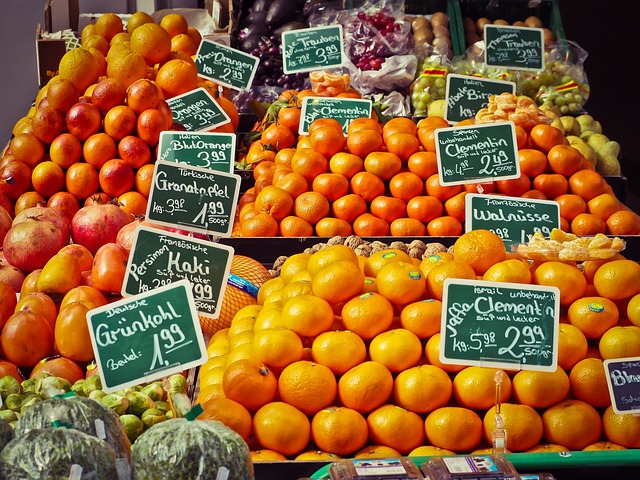Tree trimming, done right with species-specific care and proper cutting techniques, enhances growth, storm resilience, and safety. Regular trimming improves air circulation and sunlight penetration, mitigating disease risks. Sustainable practices like chipping branches for mulch or compost, sorting recyclables, and composting yard waste at home reduce environmental impact. Using the right tools, such as professional-grade chainsaws and high-capacity baggers, increases efficiency and safety during tree trimming and debris removal. Strategically managing yard waste through recycling, composting, and responsible disposal reduces landfill impact, enriches soil, and fosters a cleaner, more sustainable environment.
In today’s quest for well-maintained outdoor spaces, understanding tree trimming and efficient yard waste removal is paramount. This comprehensive guide explores the art of tree trimming, its benefits, and essential practices to ensure healthy trees and a pristine landscape. We delve into effective debris removal techniques, highlighting the crucial role of recycling in sustainable yard waste management. Discover expert tips on choosing the right tools and strategies for safe, efficient disposal, leaving your yard cleaner and more aesthetically pleasing than ever before – all while promoting eco-friendly practices through responsible yard waste removal and recycling.
- Understanding Tree Trimming: Benefits and Essential Practices
- Effective Debris Removal Techniques for a Clean Yard
- The Role of Recycling in Sustainable Yard Waste Management
- Choosing the Right Tools for Tree Trimming and Cleanup
- Strategies for Efficient and Safe Yard Waste Disposal
- Top Tips for Reducing Post-Trimming Mess and Enhancing Curb Appeal
Understanding Tree Trimming: Benefits and Essential Practices

Tree trimming is an essential practice for maintaining a healthy and aesthetically pleasing landscape, offering numerous benefits that extend beyond mere aesthetics. By removing dead or overhanging branches, regular trimming enhances the tree’s structure, promoting better growth and increasing its overall resilience to storms and strong winds. This proactive approach not only safeguards your property from potential damage but also ensures the safety of those around it.
Effective tree trimming practices involve considering the specific needs of each tree species, as different plants have unique requirements. Proper techniques include making clean cuts just outside the branch collar (the swollen area at the base of a branch) to minimize wound stress and encourage healing. Additionally, regular trimming fosters better air circulation and sunlight penetration, reducing the risk of diseases and pests that thrive in shaded, damp environments. Incorporating yard waste removal and recycling methods after trimming further enhances sustainability, transforming tree debris into valuable compost or mulch for your garden beds.
Effective Debris Removal Techniques for a Clean Yard

Effective debris removal is an essential part of maintaining a clean and healthy yard. After tree trimming, proper disposal and recycling of yard waste become crucial. One efficient technique involves using chippers to reduce branches and trimmings into smaller, manageable pieces, which can then be used as mulch or compost. This not only minimizes the volume of waste but also enriches the soil, promoting plant growth.
Additionally, sorting materials for recycling is a sustainable practice. Many communities offer curb-side collection for specific recyclables, including cardboard, paper, and certain types of plastic. Yard waste can also be composted at home, reducing the need for chemical fertilizers. This organic material creates nutrient-rich compost that benefits lawn and garden plants. By adopting these techniques, homeowners can contribute to a cleaner environment while ensuring their yards remain well-maintained and aesthetically pleasing.
The Role of Recycling in Sustainable Yard Waste Management

In the realm of sustainable yard waste management, recycling plays a pivotal role in reducing environmental impact. When it comes to tree trimming and debris removal, proper disposal methods are essential. Instead of sending organic materials to landfills, where they produce greenhouse gases like methane, recycling offers a greener alternative. By implementing effective yard waste removal and recycling practices, homeowners and landscaping professionals can significantly contribute to ecological preservation.
This process involves transforming pruned branches, leaves, and other plant debris into valuable resources. Composting is one such method, where organic matter decomposes into nutrient-rich soil amendments. Additionally, many communities offer curb-side collection programs for recyclables, including cardboard, paper, and certain types of plastic. Integrating these practices into routine yard maintenance not only minimizes waste but also fosters a more sustainable lifestyle, ensuring that natural resources are conserved for future generations.
Choosing the Right Tools for Tree Trimming and Cleanup

When it comes to tree trimming and debris removal, selecting the appropriate tools is half the battle won. The right equipment can make a significant difference in efficiency, safety, and even the quality of your work. For instance, using a professional-grade chainsaw instead of an ordinary axe can prevent accidents and reduce effort when cutting through thick branches. Similarly, investing in a sturdy, high-capacity bagger attached to your lawnmower will streamline debris removal, especially for larger yards with dense vegetation.
Consider the environmental impact too. Many areas offer programs for yard waste removal and recycling, allowing you to dispose of tree trimmings responsibly. By using these services, you can transform potentially harmful waste into beneficial resources, such as compost or wood chips, which can then be reused in your landscaping efforts, promoting a more sustainable approach to home maintenance.
Strategies for Efficient and Safe Yard Waste Disposal

When it comes to efficient and safe yard waste disposal, a well-planned strategy is key. One effective approach is to recycle as much material as possible. This not only reduces the amount of debris ending up in landfills but also provides valuable nutrients back into your garden. Start by identifying reusable items like wood chips from pruned branches, which can serve as mulch, or compostable materials that can be turned into rich soil amendments.
For larger branches and trimmings, consider using them for firewood or logging them responsibly for forest conservation efforts. Many communities also offer yard waste collection services, allowing for proper disposal through dedicated programs. These initiatives promote yard waste removal while encouraging environmentally conscious practices. Remember to stay safe by wearing protective gear during trimming and ensuring proper handling and disposal methods for all debris.
Top Tips for Reducing Post-Trimming Mess and Enhancing Curb Appeal

After tree trimming, one of the most significant challenges homeowners face is managing the resulting debris. To reduce the post-trimming mess and enhance curb appeal, start by creating a plan before you begin. Organize a designated area for stackable materials and ensure proper storage for tools to maintain order. This systematic approach not only streamlines cleanup but also makes yard maintenance more efficient in the long run.
Additionally, consider implementing strategies for yard waste removal and recycling. Proper disposal methods can significantly improve your neighborhood’s aesthetics. For instance, separate organic debris for composting, which enriches soil health, while using a reliable yard waste removal service ensures timely collection of non-recyclable materials, keeping your landscape clean and inviting.
In conclusion, proper tree trimming and efficient yard waste removal are essential practices for maintaining a healthy, aesthetically pleasing outdoor space. By understanding the benefits of trimming and adopting effective debris management techniques, including recycling, you can significantly enhance your curb appeal while promoting sustainable practices. Armed with the right tools and strategies, you’ll master the art of upkeep, ensuring a clean, well-managed yard that contributes to both the beauty of your home and the environment.



